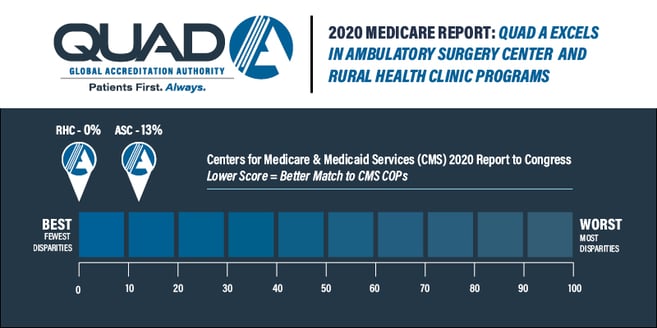HIGHLAND PARK, IL – QUAD A recently announced the release of the Centers for Medicare & Medicaid Services (CMS) report to Congress showcasing QUAD A's performance in the Ambulatory Surgery Center (ASC) and the Rural Health Clinic (RHC) programs.
In the ASC program, the data demonstrate a 13% disparity rate, surpassing competitors and setting an industry standard for excellence. Similarly, QUAD A's commitment to excellence is evident in the RHC program, where it has achieved an exceptional 0% disparity rate and identified critical healthcare concerns accurately.

It's important to note that the CMS' disparity rate indicates the percentage of times QUAD A's findings did not align with the federal government's expectations. By maintaining a lower percentage, their findings consistently match the government's expectations, emphasizing the consistency and reliability of its performance.
As an international non-profit healthcare accreditation organization, QUAD A's mission is to secure the highest quality of services for patients and staff.
QUAD A's accreditation process revolves around the core principle of putting Patients First, Always. This commitment empowers patients to consistently expect more from their healthcare facility. By conducting a comprehensive review of services, quality of care, and patient outcomes, QUAD A equips its accredited facilities with the latest knowledge and best practices to deliver the highest level of care for every patient.
To learn more about QUAD A, their accreditation process, and why it’s so important to seek out accredited facilities when making healthcare decisions, visit www.quada.org.
Since 1980, QUAD A (a non-profit, physician-founded and led global accreditation organization) has worked with thousands of healthcare facilities to standardize and improve the quality of healthcare they provide – believing that patient safety should always come first.


